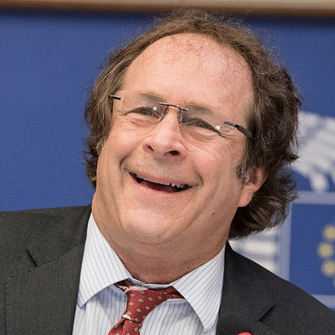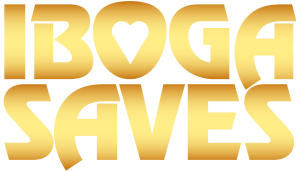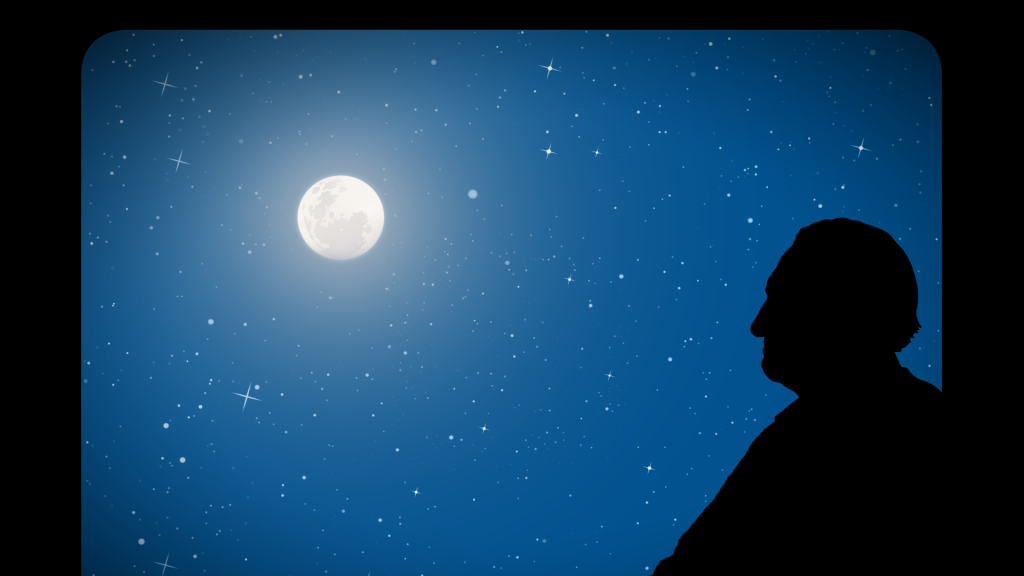Crucified on the Cross of Self-Perfectionism: An Interview with Rick Doblin
 Rick Doblin founded MAPS.org (Multidisciplinary Association for Psychedelic Studies), a non-profit organization that has spent the last 35 years in an effort to get MDMA approved for therapeutic use. They are now in Phase 3 clinical trials for MDMA, the last hurdle before it becomes a prescribable drug. Their studies show that PTSD sufferers show no sign of the disorder one year after receiving MDMA therapy in almost 70% of the cases. In 1985 Rick took ibogaine so that he could deal with his own shadow before going up against the DEA. This is an account of his death and rebirth experience.
Rick Doblin founded MAPS.org (Multidisciplinary Association for Psychedelic Studies), a non-profit organization that has spent the last 35 years in an effort to get MDMA approved for therapeutic use. They are now in Phase 3 clinical trials for MDMA, the last hurdle before it becomes a prescribable drug. Their studies show that PTSD sufferers show no sign of the disorder one year after receiving MDMA therapy in almost 70% of the cases. In 1985 Rick took ibogaine so that he could deal with his own shadow before going up against the DEA. This is an account of his death and rebirth experience.
Lakshmi Narayan Would you be willing to talk about a potent inner psychedelic experience that influenced you in your life? Something that stands out for you in particular, whether it was ibogaine or something else, something that really was pivotal for you.
Rick Doblin
Well, I’ll talk about ibogaine. So I’ve done ibogaine one time. It was in 1985 and I was with Leo Zeff. He was, you know, The Secret Chief, the title of a book written about him and what was going on was we were in the early stages of the lawsuit against the DEA. And what he said was when you’re doing this I want to offer you psychedelic therapy to deal with your own shadow so that when you’re going up against the DEA, you don’t project all your shadow on them. It’s not like you’re all good and they’re all bad, and then how do you actually reach them as human beings if you’ve demonized them? So, he offered me this experience with ibogaine.

Rick Doblin outside the door of the DEA
And so, as it turned out, the way that Leo did it, it was with the plant, the iboga root, but he administered 350 micrograms of LSD and a whole bunch of pills with the root. What he said was when you take the roots in the pill form it takes quite a few hours for it to take effect, and he didn’t want to just sit around for those many hours with nothing happening. So that’s why he did the 350 micrograms of LSD too, and I could definitely feel the trajectory of the LSD going up and peaking and then kind of moving through that, and then I felt something else coming up underneath, so I could even feel a different kind of thing as the LSD was wearing off and the ibogaine was coming on. It turned out to be one of the hardest experiences I’ve ever had with psychedelics. The LSD was challenging for sure, but I was really knocked down by the ibogaine. I think about that experience a lot and feel that some of the lessons that I had from that have major impact on my ability to run my life, and the success of MAPS is a lot due to that ibogaine experience.
And when I think about it, it’s more about the ibogaine than the LSD in that particular session. And so it turned out to be roughly 12 hours of vomiting and a very difficult time. It took me four days until I felt safe enough to drive after that. The second day, I couldn’t even sit up without getting nauseous, so I spent the whole second day just curled up in the fetal position under the stairs. The third day somebody came and picked me up where I was. You know, I was supposed to do it in the morning and leave the next day, and I was incapable of leaving.
And so the core of the experience was this metaphor for me. Being Jewish, I rarely have Christian imagery, but this was Christian imagery. The way I described it to myself, it was being crucified on the cross of self-perfectionism. So it was this link between self-criticism, perfectionism, and self-hatred. And it was also this idea that as I was doing this LSD and doing the ibogaine that if I could just let go, if I could just surrender my ego, I could open up, that I would have these profound mystical experiences, that I would have new ideas. That’s all I needed to do, just really surrender to it, but I couldn’t, because I was too fearful and too anxious about it. So then I would see that process. And then I would kind of get on my case for not being able to do that. And that would make it even harder.
Lakshmi Narayan The hologram of the whole issue basically.
Rick Doblin Yeah, it was. It was tough. So then I would have this idea too — I had been reading Carlos Castaneda. And he talked about thinking about death over your left shoulder. That there’s always this awareness of death. So then I would have this sense that if I was fully aware of death, then I would be able to appreciate life. And that that’s what I needed to do. And then while I was seeing that I couldn’t let go and I was scared, I would start vomiting, I would start coughing, I would start choking, and I would sort of be short of breath. And I would feel like I was almost but not actually dying. I was having these kinds of difficulties with breathing and I thought, “Well, this is helping you, you know, be closer and closer to this sense of what it’s like to die, and if I could just do that.” And so what I recognized throughout this was that I was always coming up short. And so I was just constantly exaggerating the self-criticism and the self-hatred. And it just kept going over and over and over like that, and after I’d vomit for a while, then I’d feel good for a few minutes. And then I’d feel this nausea, this swirl in my gut. So I would say that I felt that LSD was more in my head and ibogaine was more in my gut, That it just felt very embodied and grounded in a way, and LSD feels more ethereal and mental. So I would just have this repeated cycle over and over, thinking about how I needed to think about death. And I need to be aware of that and I’m choking and all and then vomiting.
The other words that I used to describe it was transcendence through exhaustion. After 12 hours of that, a whole day of just being super critical, I saw that the sun had set and somehow or other, I was so exhausted, that everything shifted. And it was just this blissful, peaceful acceptance. And I spent the whole night awake, looking at the stars. I was inside, but I could see through some windows to the stars. And I just felt this beautiful, peaceful, wonderful acceptance.
This is where I sorted it out: the idea that self-criticism is essential. It’s the drive for quality. It’s how you learn. You need this constant inner critic, but if you can separate it out from self-hatred, then it’s not so painful. And then what made it so painful was this idea of “I should be perfect.” “I shouldn’t. . .” And that also linked me into Jesus; you know, I should be perfect, and I should be like Jesus. And I should be the Messiah. And I should be this, but I’m not, but I’m holding myself back. And it’s my fault because I can’t summon the courage to just dissipate into ego dissolution.
And so on this blissful night, I realized that I really want to make friends with that self-critical part. And not have it be so painful. And as long as I accepted that I was human, I didn’t need to be perfect.
And then the other part is that I wouldn’t even have the idea of how I could do things better if I hadn’t done the thing in the first place. And I can praise myself for having done something. And then, “Okay, now I see I learned, now I can do it better.” But I wouldn’t have gotten the lesson if I hadn’t done the thing.
And I realized the worst thing is to be paralyzed by, again, the self-criticism, from doing anything. Because a lot of people get into that. Just saying I’m gonna do nothing so that you can’t criticize me.
So, yeah, so the night was beautiful. And that’s where I think I made this change where the self-critical inner voice became more of an ally than painful. But I told myself that I hadn’t really earned it in the sense I hadn’t worked my way out of it. I just had exhausted myself.
Lakshmi Narayan There’s the critic again!
Rick Doblin Yeah. And somehow, I said, that when the sun comes up again, I’ll be back in this state. And so that’s what happened.The sun comes up, and then nausea comes back, and I can’t stand up and everything. And so that was that whole second day and just feeling beat up and horrible and just nauseous.
And then the third day, as I said, somebody came and picked me up, but when they picked me up, and they were driving me away from where I had been — I’d never been there before where the session took place, but I felt like I could predict what was going to be around the corner. Like I had peripherally sort of noticed things as I was going there. And I felt like I had burned up a lot of the inner chatter in my brain so that I had more space for noticing the world. And I somehow had more access to memory.
And then over time, I just realized the wisdom of this idea of making an ally of the inner critic. And so when I think about what’s happened now, that was 34 years ago, 35 years ago, almost. I really think that that ability to self-correct and to learn from my mistakes and not have it be so painful is the key to a lot of the progress and that I owe much of that to the ibogaine experience.
Lakshmi Narayan You mentioned at the beginning that because you’re Jewish you didn’t expect to have the crucifixion experience. I’m wondering whether your assessment of the crucifixion experience has changed in the aftermath, as being perhaps not something belonging to a specific religion but more of an archetypal or symbolic representation of an ego death?
Rick Doblin Yes, exactly. I see crucifixion as being an archetype and symbolic and something people of all religions can experience and learn from.
Subscribe to receive the next post in the series “MAPS and the Future of Psychedelic Medicine”
Learn more about the lawsuit against the DEA filed in 1985
On July 27, 1984, the DEA announced in the Federal Register its intention to place MDMA in Schedule I, the most restrictive category of regulated drugs. Because Schedule I drugs are considered to have a high potential for abuse and no accepted medical use, they are the most difficult substances for which to obtain permission and funding for clinical research, and all non-research medical uses are prohibited.
Unknown to the DEA, however, their action had been anticipated by a group of people who strongly believed that MDMA had therapeutic benefits that, if the drug was prematurely scheduled, could be lost to the scientific and medical communities. As MAPS president Rick Doblin said in an interview with Dr. Julie Holland in Ecstasy: The Complete Guide, “When I learned about MDMA [in 1982], I realized that this was an extraordinary situation in which there was a semisecret underground river that was nourishing the psychedelic community.” Quietly, psychiatrists, marriage counselors, and therapists were using MDMA to enhance the therapeutic process. As the drug became used recreationally, however, the DEA response seemed likely, and the psychedelic community began to prepare. Rick Doblin, Alise Agar, and Debby Harlow organized a non-profit group called Earth Metabolic Design Laboratories (EMDL), which they intended to use to support the therapeutic use of MDMA.
When the DEA’s scheduling announcement came, EMDL collected letters from respected members of the scientific and medical communities, petitioning the DEA for a scheduling hearing.
“I later learned that the DEA had absolutely no knowledge of the underground therapeutic use of MDMA and were taken totally by surprise by our petition. The DEA Administrative Law Judge saw that we had sufficiently credible people requesting a hearing and decided to grant our request,” said Doblin. Excerpted from MAPS.org
 Writing & Animation:
Writing & Animation:
Lakshmi Narayan is the founder and editor of awake.net, a non-profit collective wisdom blog about the inner journey with entheogens, and founder and creative director of Awake Media a digital media company offering media products and web services to clients in integrative health, transformational technology, and mind-body-spirit healthcare. She has a decades long interest in the cause of repositioning psychedelics in the public mind, and educating people about the benefits, cautions, best practices, and timeless wisdom that can be had from these experiences.

